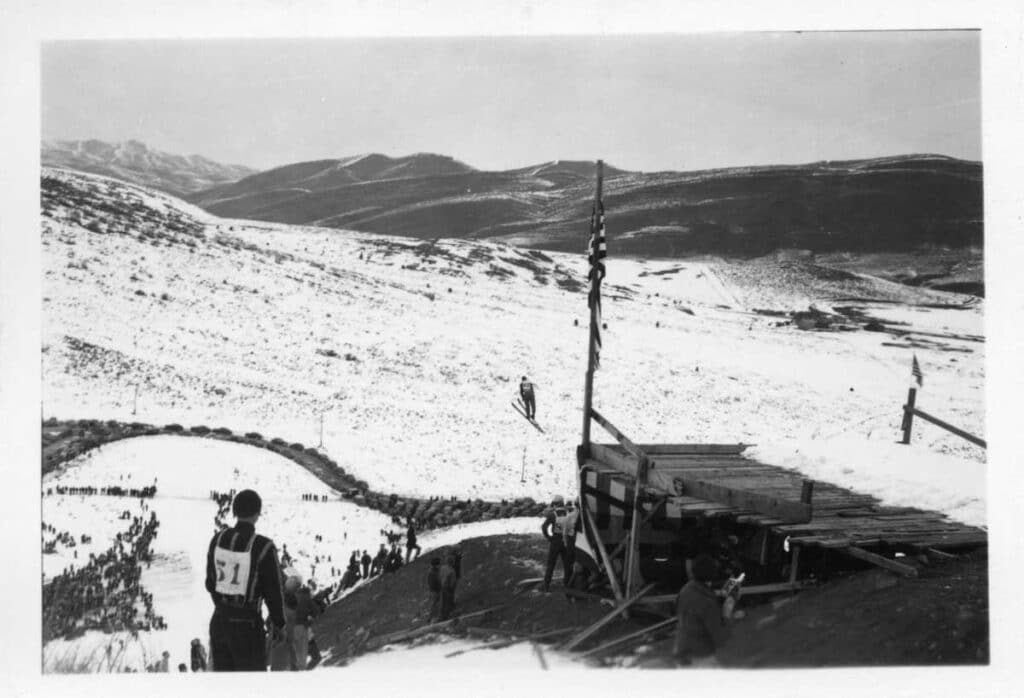The following is the first article in a series on the idea to build a ski resort in Park City.
For most Parkites, the winter season was an unavoidable nuisance if not an outright liability. Not so for Mel. He was a gifted scholar/athlete. Although only 17 years old and a junior at Park City High School, he was wise beyond his years. As it related to the future of winter sports, one could use the term “clairvoyant” to describe him.
Mel loved his family, his town and its four seasons. But, for Mel, winter represented a time of magic. Snow sports were his specialty – especially those involving skis. His ski jumping exploits, whether at the Creole Jump off the old Creole Mine dump (opened 1930) or Ecker Hill (opened 1928), were legendary. Despite his youth, he could hold his own with the best of the best. His humbleness endeared him to all.
The Great Depression exposed the risk of an economy based upon a single industry. In Park City’s case: metal mining. From 1930 to 1940 the town’s population would decline by thirty percent and most of the mines would close. Those continuing to operate struggled financially. The ensuing economic misery was palpable, touching all who remained. Mel was no exception.
Mel did not dwell on the past and a return to the “good old days.” Rather, he looked to the future, envisioning a robust economy based upon the twin pillars of mining and winter sports. The town’s mountains, abundant snow, and transportation infrastructure represented potential salvation. He was unabashed in expressing his vision of the future. While such prescience may have positioned him as an outlier, he was not alone.

Credit: Park City Historical Society & Museum, Mel Fletcher Collection
The 1932 Winter Olympics in Lake Placid, NY piqued the country’s interest regarding winter sports. While luxury ski resorts were common in Europe, it not so in the U.S. Whatever facilities existed were primitive at best. Nonetheless, an ember began to glow. Mel, and others intended that ember to become a guiding light.
In December 1935, Guy R. McKay, the WPA engineer for Summit County, announced a commitment by the Roosevelt Administration to develop a “Winter Sports Park” in Park City. The WPA would invest $15,000. The location picked was an area called Deer Valley on the southeast side of town approximately three miles from the bottom of Main Street. Salt Lake City, Ogden, Heber City, Park City, and Summit County rejoiced.
The award culminated a coordinated campaign by these communities to leverage Park City’s mountains and Utah’s (soon to be known) “Greatest Snow on Earth” for economic revival. Seemingly a world away in New York City, in the executive suite of the largest private bank in America, Brown, Brown and Harriman – two men discussed the promising future of winter sports in America. One of them was destined to meet Mel Fletcher.
The author wishes to acknowledge the contributions of Alan Engen, Peggy Fletcher, the Hewitson Brothers (Ken, Bill and Jim), Steve Leatham, Connie Nelson, Mark Schmitt, and Larry Warren.
The Park City Museum is hosting one leg of the Garlic Mustard Games at the Glenwood Cemetery (another of Mel Fletcher’s passions) on Saturday, July 8. Just show up at 8 a.m. to help de-weed the historic cemetery!